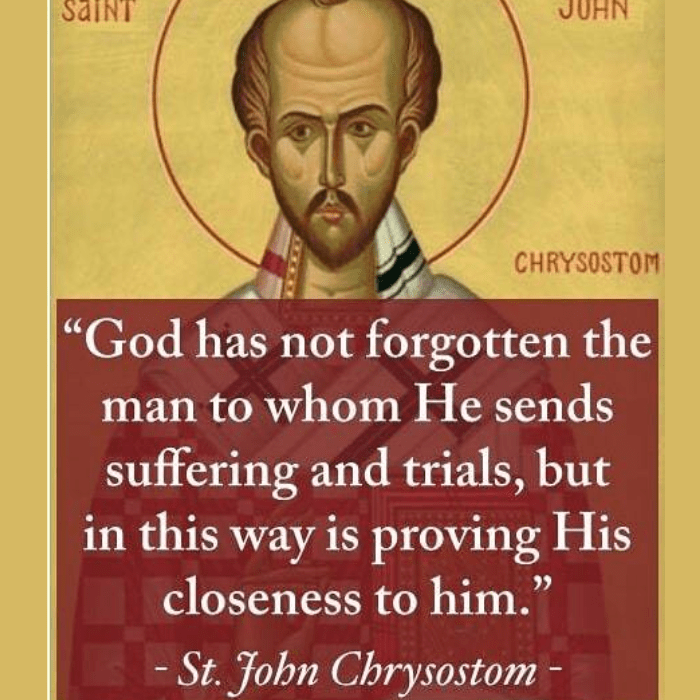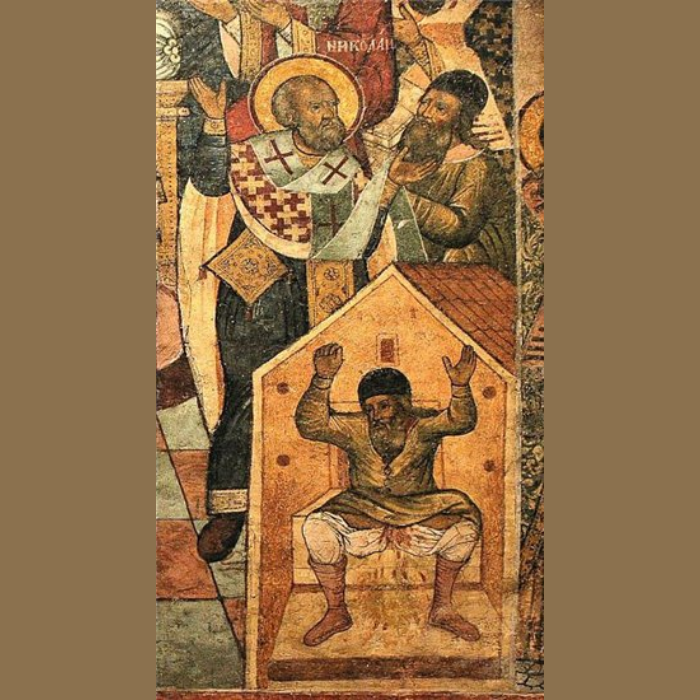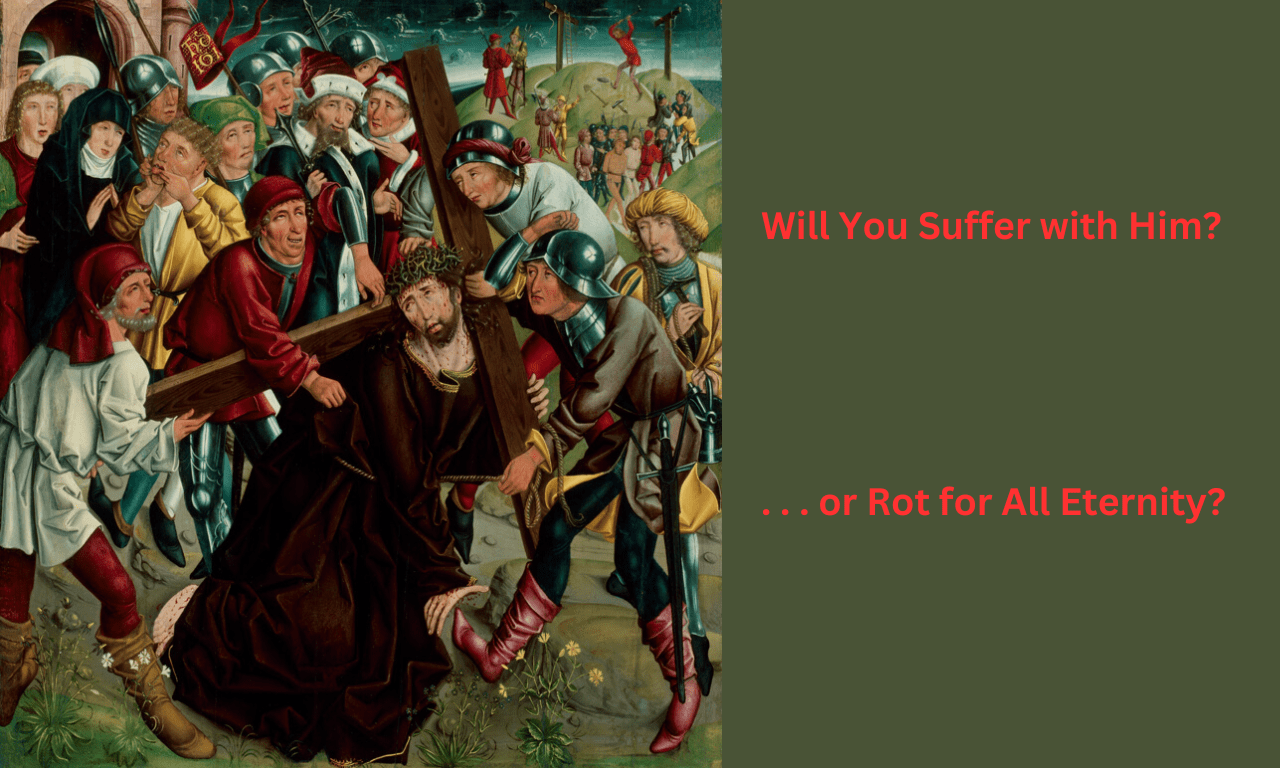We must comprehend the distinction between redemptive suffering and merely rotting.
As you know, a Christian is called to go through life with a cross on his back. Our pilgrimage through this “vale of tears” isn’t a picnic or pleasure cruise. We must embrace a destiny of suffering since it was commanded of us by Our Lord Himself.
How well do people do that, though? Also, how do you tell whether you suffer for God, or simply suffer the consequences of a horrible/wicked life?
I’d like for us to investigate the different ways people suffer, rot, or do neither:
- Examples of Holy Suffering
- Examples of Rotting
- The Suspicious Occasions When Folks Go “Unscathed”
Examples of Holy Suffering
Jesus Christ & Our Lady
The discussion of holy suffering must begin with the two greatest to have walked the earth: Our Lord and Our Lady. Even just acknowledging His physical misery should be enough to convict us of our faults, send us to the confessional, and leave no doubt of His unwavering divine love. However, because of those faults, Jesus’ suffering goes well beyond the corporeal agony of the Cross.
While praying the Rosary, we don’t refer to His Passion as the “painful mysteries,” but as the Sorrowful Mysteries. That’s because our numerous crimes, so often unrepented, contribute the most to His suffering (and that of Our Lady). There is no greater way to love others than to lay down one’s life for them, as Jesus did, suffering even more since we refuse to requite it.
St. Athanasius
In my book Caesar Vacantism, the final chapter exhorts the reader to “Be Ready to Be St. Athanasius.” This is because we will have to suffer his loneliness, as many of the great saints have done. He wasn’t entirely isolated from other true believers, but vastly outnumbered by Arians, exiled by the Roman emperor, endured personal attacks . . . and still overcame all of it to become the first great Church Doctor.
St. Thomas More
If you’ve ever toured the Tower of London, then you may already know what kind of suffering this holy martyr faced. While he didn’t undergo every torture device, he languished for a long time in miserable close confines. More, not one to waste suffering, devoted pages of prose describing the misery of our exile from God; a far greater imprisonment than even the worst Supermax facility.
St. John of the Cross
You don’t receive “of the Cross” affixed to your name by living like a bourgeoisie socialite. St. John earned this distinction by cooperating with sanctifying grace, embracing many hardships during months cramped in a tiny prison cell (where he wrote The Dark Night of the Soul). Perhaps if the world worsens, and we find ourselves in a solitary gulag, we might call upon St. John of the Cross as the patron saint of such arduous circumstances.
St. Jean Vianney
What a tremendous saint, who may be the only true diocesan priest recognized in the Canon of Saints. Fr. Emil Kapaun would be the second, and I’m not sure of St. Philip Neri’s priestly status. Otherwise, diocesan priests have garnered little recognition as saints, perhaps because of the political and worldly pressures they face. The old term for “diocesan priest” was “secular priest,” which might explain the inherent limitations of that vocation.
Nevertheless, St. Jean Vianney overcame the politics of the priesthood, suffered like a champ, and brought numerous souls to God. Besides enduring attacks from the devil, the Cure d’Ars also suffered treachery from his brother priests. Amid their envy, they circulated a petition for the bishop to fire him, citing an “unfitness for Christ’s priesthood.” Vianney, humble saint that he was, responded by . . . signing the petition. He provided a tremendous example for every “canceled” priest facing vocational suffering and perseverance.
Patrick Coffin
Although Patrick takes the wrong approach to understanding the Bergoglian antipapacy, he’s in the ballpark, has plenty of guts, and appears to suffer like a loyal soldier of Christ. Whether right or wrong over his views of the Church, we can at least see he’s taken a few hits and isn’t (likely) earning a paycheck from Vatican Inc. This is more than we can say, perhaps, about his previous employer, those folks who believe they have “all the answers.”
The Society of Saint Pius X (SSPX)
How do you know the SSPX is thriving and worthy of patronage? Instead of joining today’s horrible obsession with “following the science,” I suggest we follow the suffering. They’ve not only erected the best new cathedral in the world, but all the usual suspects castigate them with specious arguments alleging their schism. While you can’t always tell your friends by their enemies, obvious signs of suffering mingled with bountiful fruits should tip the scale.

Examples of Rotting
Those are the examples of holy suffering. Where might be find those who seem to suffer, but a truly rotting instead?
Judas Iscariot (spontaneous rotting)
What happens when you’re guilty, feel some remorse, but do not seek God’s loving mercy? If you’re Judas Iscariot, then your guts explode. Many saints have suffered slow and painful final hours before giving up the ghost. Pious tradition, however, warns us that a sudden death (aside from martyrdom) isn’t the best sign of sanctity. That’s bad news for Judas, one of the few men the Church recognizes as an undisputed denizen of Hell for all eternity.
Antiochus IV (near spontaneous rotting)
“Now I remember the evils I have done (1 Mach 6:12).” The wicked Greek king who persecuted the Jews recognized his evil; half-heartedly and far too late. He died after God struck him with a sudden bowel disease, causing an ejection from his chariot. Antiochus never expressed genuine contrition, only a despair for losing his health. Notice, also, this common motif of “bowel” problems among the wicked.
Arius (bowel trouble yet again)
Saint Alexander was almost forced to admit the arch-heretic Arius into communion, before prostrating himself before the Blessed Sacrament, begging for intervention. God answered his prayer and eliminated Arius in similar fashion to Antiochus IV. Unrepentant of his errant teachings, Arius was forced to die on the toilet. Some accounts claim he exploded like Judas. Either way, he died outside the Church, without Viaticum or any other last rites.

Church Militant Apostolate (economic rotting)
By their fruits you’ll know them, and the recent fruits have been neither fresh nor abundant for the Church Military in Detroit. The apostolate appears to be hemorrhaging what’s left of its subscribers, finances, and has had significant layoffs. Their programming focus (“SSPX is in schism!” or “Look! Bishops are Gay!”) has run its course. Catholics have grown tired of their brand of neoconservative, anti-traditional yellow journalism and muckraking. Their rival, the SSPX, suffers and flourishes; the Church Military rots and declines.
Pope Paul VI (heavy post-mortem rotting)
There’s a pious tradition in the Church, which speaks of “the odor of sanctity” among saints. Sometimes, when they die, you’ll notice a pleasant scent, no bodily corruption, and other physical signs of their holiness. This topic is in the news right now with the Missouri abbess who was exhumed and found incorrupt (pending investigation).
Alas, this miracle may have skipped Pope Paul VI, who was said to have rotted most horribly while laid in state. We cannot judge the interior of his soul, of course, but much could be said of his externals. Even beyond his pungent corporal remains, we should reflect on the many rotten fruits of his papacy. This includes a meteoric collapse in the practice of the faith following the Vatican 2 infiltration party, reason enough to question his “canonization” performed by . . . an antipope.
What If You Go Through Life Unscathed? The Curious Case of John Salza

Now that we’ve reviewed several examples of suffering versus rotting, we should investigate folks who seem to exhibit neither. Let us examine the curious case of John Salza, who seems to have miraculously evaded the wrath of Freemasons despite exposing many of their juicy secrets.
Zounds!
Disclaimer: I’m sure Mr. Salza is a terrific guy, even if he spends an inordinate amount of time criticizing the SSPX along with the Church Military. Perhaps if I’m wrong on this, he would write a pleasant rebuttal explaining why. I warmly welcome such clarification.
If you’re unfamiliar, John is the one who claims to have left a high-ranking position, as a 32nd-degree freemason, to become Catholic . . . with no discernible retribution from the freemasons. Taken at face value, he would have us believe he left one of the most powerful secrets societies of the last 400 years, and gotten away with exposing all of its secrets.
How has he escaped the fury of such an influential and notoriously world-dominating institution unscathed?
I have no idea . . .
Could you imagine a high-ranking mafioso (like Sammy “The Bull” Gravano) becoming an informant against the mob without needing to enter witness protection? Whenever we discuss “secret societies,” we must recall how they always operate: under the Code of Omerta.
In a nutshell, it requires group members to keep the secret society’s dirty deeds “silent” under pain of death. Just as mortal sin kills a Catholic’s relationship with God, violating Omerta earns you a slumber with the fishes. Ann Barnhardt likes to use this concept (popularized by the Sicilian mafia) to describe the code of silence between fags in the Vatican.
After infringing upon Omerta, the only way to avoid a brutal demise would be to hide from the light of day, change your name/appearance, and pray you’re never found. This is a far cry from becoming a Catholic apologist, remaining in the open and vulnerable to anything, AND revealing all the Freemasonic ritualistic goodies.
Of course, there’s probably a catch (and logical explanation) hidden in plain sight: John never really left the Freemasons. Again, I’m hoping this is untrue, but it’s plausible given his ease of existence following his defection. He, like Church Military, seems to enjoy the comforts and protections of generous donors and powerful institutions (likely Opus Dei). Unlike the floundering Detroit apostolate, however, he seems to be no worse for the wear.
Why does this example matter? What does it have to do with suffering versus rotting?
It’s relevant because we must exercise extreme caution with folks who seem to go through life devoid of any noticeable struggling or suffering. John doesn’t seem to have any noteworthy suffering/redemption story.
Rather, he appears to be an untouchable lawyer, and a popular media darling among all the mainstream, yet allegedly independent Catholic media sources (Church Military, Matt Fradd, etc.). John Salza (a staunch “you’re in schism” zealot) appears to be thriving amid a diabolically disoriented world, run by Satan.
Perhaps that arouses your suspicion just a little . . .
In conclusion, if you don’t know about John Salza, then it’s worth some independent research. I won’t say he’s a guaranteed villain, but his public record of lawyerly opposing the SSPX, merits significant caution.
This is yet another shining example of how we cannot afford to lap up every piece of Catholic media (including this website) without scrutiny or discernment. As we all know, Catholics aren’t zombies who consume information indiscriminately without reflection.
Concluding Thoughts
I ran out of space in this article, but I intended to conclude with the story of how St. Alphonsus Liguori rescued Pope Clement XIV from an eternity of rotting. You should review that account when you have a chance. It’s a hopeful reminder that we’re not doomed at any point, as long as we don’t eliminate every fiber of charity from our hearts.
Let us never find ourselves in the position of Antiochus IV, Judas Iscariot, Voltaire, Arius, or other historical “bad guys” who only repented at the last second. Instead, may we always cooperate with the Holy Spirit to discover full contrition of our sins, go to confession, amend our lives, and . . . suffer like the saints.

